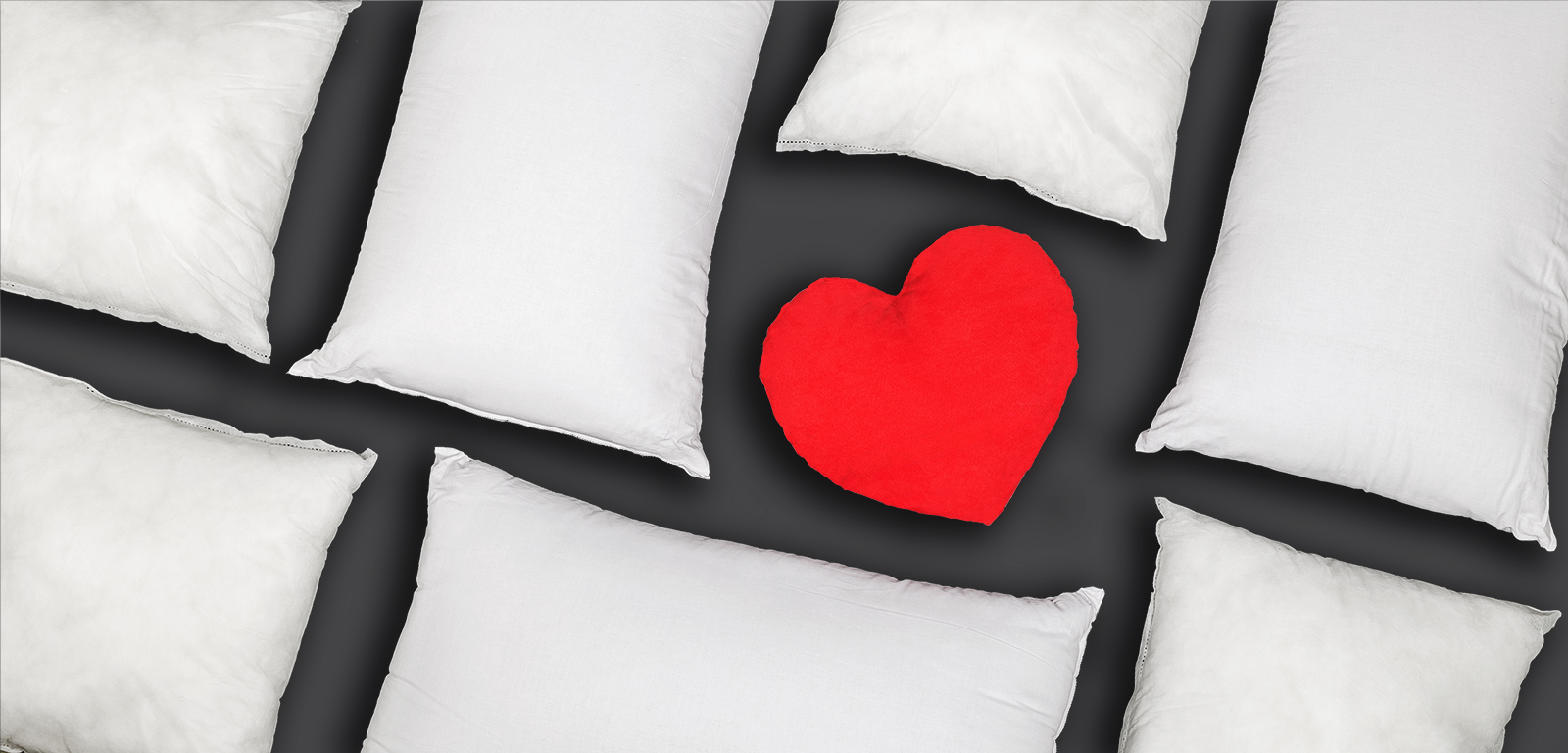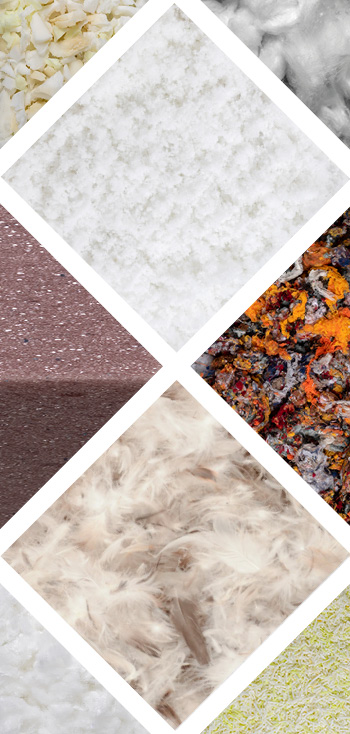
When it comes to creating comfortable and supportive pillows and cushions, the choice of filling material plays a pivotal role: it determines the level of comfort, durability, and overall feel of the finished product. To make the right choice, manufacturers must consider the intended purpose of the pillow, material cost, and production processes to ensure their creations meet customer expectations while remaining cost-effective.
PILLOW FILLING CHOICES MATTER.
Each filling material, and the technology used for its processing, offers its own unique characteristics, advantages and disadvantages: knowing all of this is crucial both for manufacturers to optimize their production processes and for consumers to make informed choices that align with their sleep preferences. Whether it’s the luxurious feel of natural down and feathers, the hypoallergenic properties of blown fiber, the supportive resilience of memory foam or the softness of microfiber, understanding the intricacies of filling materials enables manufacturers to craft products that cater to a diverse range of sleepers.
FIBERFILL COMPARED.
Polyester fibers are a synthetic material that is affordable, hypoallergenic and lightweight. Generally, these fibers are classified according to their length (long or short fibers) and deniers.
Deniers serve as a fundamental unit of measurement to determine thickness and, consequently, the overall feel of the pillow. High denier fibers are heavier and thicker, while fibers with a low denier count are soft, and silky: microfibers are part of this second group because they are the finest fibers (less than 1 denier). Depending on how they are processed, two different fill materials are created: blown fiber or carded fiber, also known as garneted fiber.
When using blowing technologies, loose fiber is opened mechanically through needles or by air and then blown into the pillow casing. The output is soft and moldable, and it might require regular fluffing and reshaping to avoid clumping. The main benefit of blown fiber pillows lies in their ability to conform to different sleep positions.
On the other hand, with carding technologies, fibers are combed into a more structured batting before being inserted into the pillow casing. This process results in a firmer feel with the ability to maintain the shape and support over the long term.
DOWN AND MICROFIBER: BEDDING ALTERNATIVES DECIPHERED.
Down and microfiber, often referred to as down alternative, present contrasting options in the realm of bedding comfort. Down, derived from the feathers of duck or goose, offers a luxurious and fluffy feel. Its insulating properties provide warmth and softness, which is why it’s often associated with high-end bedding. However, these products may not be suitable for everyone, as they can potentially trigger allergies due to the accumulation of dust mites and allergens.
In contrast, microfiber, a synthetic material, has emerged as a popular down alternative. It emulates the softness and smooth texture of natural down without the allergenic properties, making it a compelling choice for individuals with sensitivities. Microfiber can also be sourced from recycled materials, making it an eco-friendly choice in line with sustainable practices. Additionally, microfiber often offers a budget-friendly option without compromising on a soft and comfortable feel.
BEHIND FOAM PILLOW PRODUCTION.
In recent years, foam pillows have gained popularity for their ability to contour to the shape of the body, providing excellent support and pressure relief. Viscoelastic foam, commonly known as memory foam, is crafted using various manufacturing methods, among which injected foam and batchblock foam.
High pressure injected foam manufacturing involves pouring chemicals into small molds. It results in a somewhat greasy viscoelastic foam with a non-breathable external skin, which needs two extra steps: adding talcum powder to remove the greasiness and, if used in the bedding sector, punching holes in the external skin to make the foam breathable. That’s why it is mostly used in other industries, such as for automotive interiors and padding.
On the other hand, batchblock foam is produced in discontinuous lines by mixing and pouring chemicals into big molds to expand and cure. The foam blocks are then cut and shaped into various products like pillows and mattresses, with no need for punching because the foam has open cells. Batchblock foam is valued for its versatility and cost-effectiveness, as it allows for the production of foam materials in large quantities and diverse shapes.
WHY STOP AT ONE?
Different types of blends are also commonly used as filling to combine the benefits and characteristics of different materials, to create pillows and cushions that offer a balanced and tailored experience. In recent years blends of raw and recycled materials are also catching on to reduce raw material purchase. For example, it’s possible to reuse production scraps from the manufacturing process and blend it in low percentages with other materials, such as ball fiber or microfiber. Blends can be customized to meet specific requirements, whether it’s increasing fluffiness, resilience or any other feature. This versatility makes blend-filled pillows a popular choice, because it covers a wide range of preferences and needs.
WHAT ROLE DO MACHINES PLAY?
Choosing the appropriate machine to handle raw materials and the right pillow blowing or stuffing equipment is essential to guarantee the production of quality pillows.
Throughout the years, our commitment to research and development has led us to design automated machines that not only handle raw materials with precision but also bring out their full potential. That’s because an automated process helps distribute filling materials accurately and evenly throughout the pillow casing: this ensures consistency in every single product, but also an improved management of raw materials and therefore a reduction of waste.
Inappropriate equipment on the other hand can result in uneven lumps in the pillow, leading to discomfort and reduced quality. On top of that, automated machines have quality control features, such as weight measurement and inspection systems, to monitor and ensure the quality of the filled pillows. These data, and in general a digitalized process, are key to keep an eye on costs, performances and inefficiencies.





